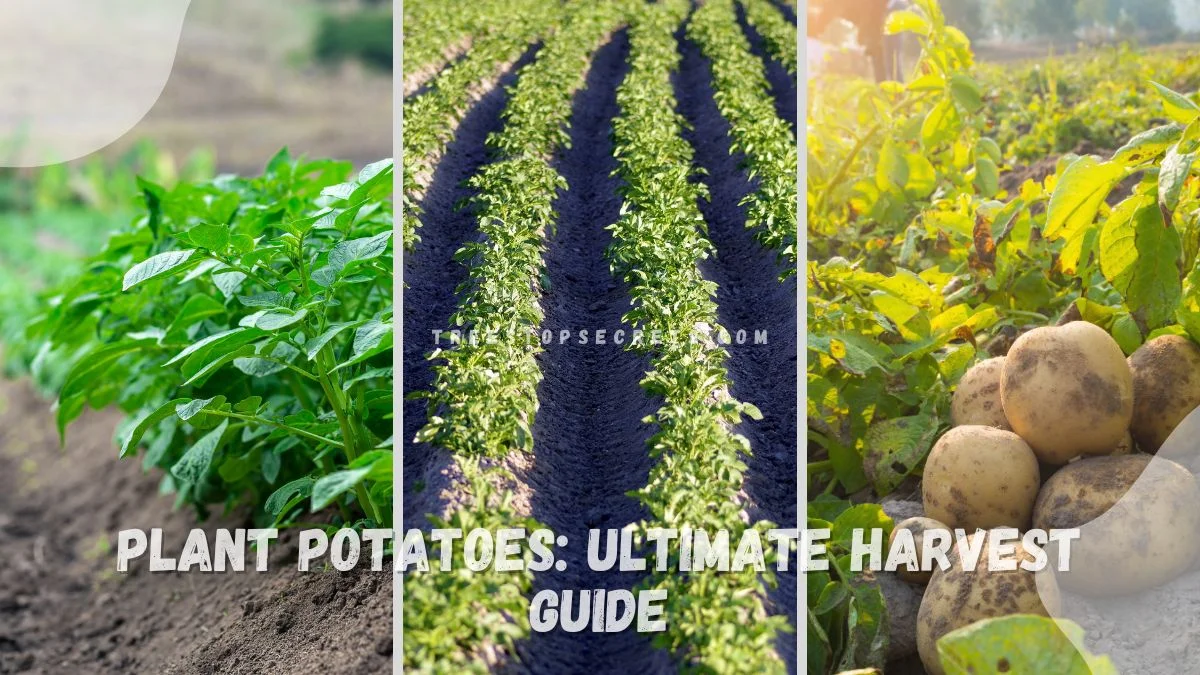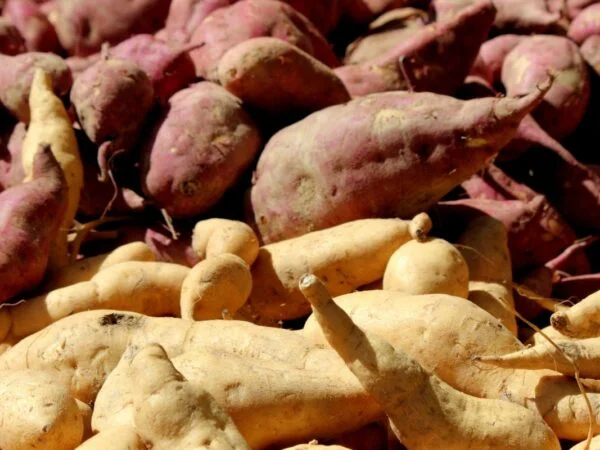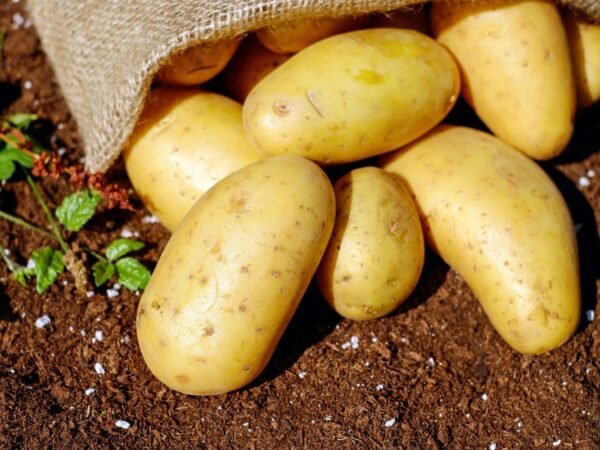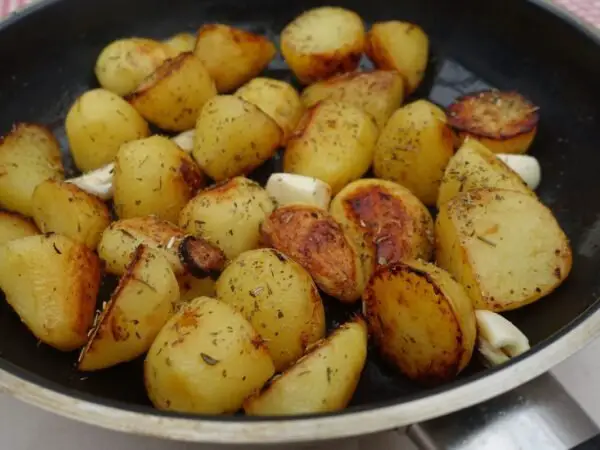Looking to grow your own potatoes in raised beds but unsure of the best way to plant them, sprout, and dig for bountiful harvests? What if there was a simple method that could yield a bountiful harvest with minimal effort? Discover the ultimate guide on the most effective techniques for planting potatoes in your garden. From selecting the right varieties to preparing the soil and caring for your plants, this comprehensive resource will help you achieve a successful potato harvest. Say goodbye to guesswork and hello to abundant spuds with our expert tips and tricks. Ready to elevate your gardening game and enjoy homegrown potatoes straight from your backyard? Let's dig into the best practices for planting potatoes like a pro!
Key Takeaways
- Choose high-quality seed potatoes: Select disease-free, certified seed potatoes for planting to ensure a successful harvest.
- Prepare seed potatoes properly: Cut seed potatoes into pieces with at least one eye each and allow them to dry before planting to promote healthy growth.
- Plant at the right time: Plant potatoes in early spring, ensuring the soil temperature is around 50°F for optimal growth.
- Implement best practices for growth: Hill up soil around potato plants to encourage tuber development and provide adequate water and sunlight.
- Protect against potato blight: Use fungicides or organic methods like copper spray to prevent and manage potato blight, a common disease.
- Harvest potatoes carefully: Harvest when the foliage has died back, dig gently to avoid damaging tubers, and store in a cool, dark place to prevent sprouting.
Choosing the Right Seed Potatoes
Select Varieties
- Pick potato varieties that match your taste preferences and desired texture for cooking.
- Consider factors such as disease resistance and potential yield when choosing which potato variety to plant.
- Experiment with diverse options like russet, red, or fingerling potatoes to enhance your culinary repertoire.
Check Quality
- Examine seed potatoes for firmness, absence of sprouts, and any signs of rot prior to planting.
- Avoid using seed potatoes that are damaged or soft to ensure a successful potato harvest.
- Ensure the quality of seed potatoes by checking for uniform size and no blemishes.
Preparing Seed Potatoes
Separate Eyes
- Divide seed potatoes into segments with 2-3 eyes each for optimal growth and yield.
- Carefully separate eyes to avoid damage and encourage healthy sprouting for robust plants.
- Ensure each segment contains at least one eye to ensure successful plant development.
Cure Cuts
- Let cut potato pieces air dry to develop a protective layer before planting them in the soil.
- Cure cuts by exposing them to air for a few days to reduce the risk of rotting.
- Make sure the cut surfaces are calloused over before placing them in the soil to prevent infections.
Timing and Planting
Best Planting Times
Plant potatoes based on local climate and frost dates, aiming for 3-4 weeks before the last frost. Consider starting indoors for extended growing seasons.
Planting Process
Place seed potato segments cut-side down in a 6-inch-deep hole, spacing them 12 inches apart. Use low-nitrogen, high-phosphorous fertilizer between segments for growth. Cover with soil and water thoroughly to initiate growth.
Optimal Growth Techniques
Hilling Stems
- Hilling potato plants should start when stems reach 8 inches to promote tuber growth underground.
- This technique involves covering the stems with soil gradually as they grow taller.
- By repeating the hilling process, you prevent the newly forming potatoes from being exposed to sunlight.
- Once the vines start flowering, it's time to stop hilling to allow the potatoes to develop fully.
Watering Tips
- Consistent watering is crucial for healthy potato growth, aiming for around 1 inch of water per week.
- To avoid issues like waterlogging or drought stress, monitor the soil moisture levels regularly.
- Be sure to adjust your watering routine based on factors like weather conditions and the plant's specific requirements.
Battling Potato Blight
Prevention Strategies
Planting potatoes comes with the challenge of battling potato diseases like blight. To combat this, implementing prevention strategies is crucial.
Crop rotation is a key tactic to reduce the risk of soil-borne diseases. By rotating potato beds with other crops, you can disrupt the life cycles of pathogens that cause infections.
Using certified disease-free seed potatoes is essential. These seeds have undergone inspections to ensure they are free from infections, reducing the chance of spreading diseases.
Good garden hygiene plays a significant role in preventing potato diseases. Regularly removing debris and weeds from the potato bed helps maintain a clean and healthy environment for growth.
- Implement crop rotation
- Use certified disease-free seed potatoes
- Practice good garden hygiene
Harvesting Potatoes
When to Harvest
Harvest potatoes approximately two weeks after the vines have flowered for new potatoes. Wait for the vines to die back completely before harvesting mature potatoes. Check for signs of maturity such as thickening of the skin and yellowing foliage before harvesting.
Harvesting Techniques
Gently dig around the plant to unearth potatoes without damaging them. Harvest potatoes by hand to avoid bruising or cutting the tubers. Store harvested potatoes in a cool, dark place to prevent sprouting and spoilage.
Storing Your Harvest
Ideal Conditions
Potatoes thrive in full sun and well-draining soil, essential for their growth and development. Ensure the soil has a pH level of around 5, slightly acidic to support healthy potato production. Plant them in sheltered locations to shield from strong winds and frost.
- Provide full sun exposure
- Maintain pH level around 5
- Protect from strong winds and frost
Long-Term Storage
For long-term storage, keep harvested potatoes in a cool, dark, and well-ventilated area to prevent sprouting. Avoid placing them near fruits that produce ethylene to extend their shelf life. Regularly inspect stored potatoes for any signs of decay or sprouting, removing affected tubers promptly.
- Store in a cool, dark place
- Avoid proximity to ethylene-producing fruits
- Check regularly for signs of decay or sprouting
Related Reading
Growing Tips
To ensure healthy root development, mix organic matter into the soil before planting your potatoes. This will provide essential nutrients for optimal growth. Monitor plant progress closely and adjust fertilizer amounts if you notice any yellowing leaves.
Mulching around potato plants is crucial for retaining soil moisture and preventing weed growth. This helps maintain a consistent level of hydration for the plants to thrive. Remember to water consistently, especially during dry periods.
- Incorporate organic matter into the soil
- Adjust fertilization based on plant growth
- Mulch around potato plants to retain moisture
Common Issues
Keep an eye out for potato pests such as potato beetles and aphids, which can damage your crop. Implement pest control measures promptly to prevent infestations. Applying natural predators or insecticidal soap can help manage these pests effectively.
When addressing nutrient deficiencies, choose the right fertilizers to replenish the missing elements in the soil. Regular soil testing can help identify any deficiencies early on, allowing you to take corrective actions promptly.
- Watch for signs of potato pests
- Address nutrient deficiencies with appropriate fertilizers
- Monitor plants for disease symptoms
Closing Thoughts
You've now learned the best practices for planting and harvesting potatoes successfully. By choosing the right seed potatoes, preparing them meticulously, and following optimal growth techniques, you're on your way to a bountiful harvest. Remember to keep an eye out for signs of potato blight and take necessary precautions to protect your crop. Once harvested, store your potatoes properly to enjoy them for longer.
Now that you have the knowledge and tools to plant and harvest potatoes effectively, it's time to put your newfound skills into practice. Get your hands dirty, follow the steps outlined, and watch as your potato plants thrive. Enjoy the satisfaction of growing your own food and relish the delicious taste of freshly harvested potatoes!
Frequently Asked Questions
How do I choose the right seed potatoes?
To choose the right seed potatoes, look for certified disease-free varieties. Select those suited to your climate and desired taste. Avoid soft or wrinkled potatoes; opt for firm, healthy ones for planting success.
When is the best time to plant potatoes?
Plant potatoes in early spring when the soil temperature reaches around 45-50°F. This typically aligns with the last frost date in your area. Timing is crucial for optimal growth and a successful harvest.
What are some optimal growth techniques for potatoes?
Ensure proper spacing between plants for good air circulation. Hill up soil around the stems as they grow to prevent greening. Regularly water but avoid overwatering to prevent rotting issues.
How can I battle potato blight effectively?
Prevent potato blight by spacing plants properly, promoting good airflow, and avoiding overhead watering. Consider using fungicides if blight is a recurring issue in your area. Remove and destroy any infected plants promptly.
How should I store my harvested potatoes?
After harvesting, cure potatoes by letting them dry in a dark, cool place for a couple of weeks. Store them in a cool, dark, and well-ventilated area like a root cellar or pantry to prevent sprouting and spoilage.
Can you recommend any related reading on planting potatoes?
For more insights on planting potatoes, consider checking out resources on organic gardening, vegetable gardening guides, and specific potato cultivation books. Learning from experienced gardeners and experts can provide valuable tips for successful potato planting.
Image Source: Paid image from CANVA





